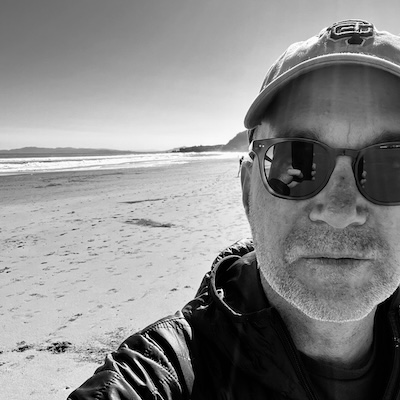there are 4 posts from January 2012
status updates
It’s my last day at SAY Media. Proud to have been part of such an incredible team here and at Six Apart.
— Michael Sippey (@sippey) January 20, 2012
It’s time for new challenges: very excited to join the product team at Twitter in a couple weeks. Onward!
— Michael Sippey (@sippey) January 20, 2012
notes on pandodaily
I’ve been enjoying PandoDaily this week; kudos to Sarah Lacy. (Disclosure: I’ve enjoyed her chicken[1].) I am seriously impressed with how much great content they’ve produced in these first few days, and it only goes to prove just how wrong Jeremiah Owyang was three weeks ago when he declared the golden age of tech blogging over.
Here’s what I think is working for Pando:
-
Simple site, simple launch. Yep, it’s a blog. Reverse chron, nice author pics, comments, simple sections with simple nav. There was no need to go all Verge-y with v1: get the voice out there, start producing content, see what works, adjust.
-
Smart, fast commentary. In tech blogging, fast used to be a differentiator; it isn’t anymore. And smart usually takes enough time to render the opinion moot[2]. But Sarah’s delivering smart stuff, fast. If she can keep it up, she’ll start to set the context for the broader conversation..
-
The ticker. Not only is it smart to mix short form and long form, but the old school blogger in me loves the sidebar linkblog format. And it’s refreshing to see links! To other sites! With credit!
-
The editorial philosophy. The name may be awkward (“But wait, where’s the cute panda logo?? Oh, PandOOOO…”), but it means something. “What really matters is what happens below,” Sarah writes in her intro blog post. Couldn’t agree more, and even in the saturated land of tech media that kind of coverage will fill a hole and find an audience.
PandoMedia angel investor[3] and board member Andrew Anker (disclosure: I’ve enjoyed his Giants tickets and other forms of largesse, professional and otherwise[1]) writes in his blog post about the Pando launch:
Media sites make for inherently cyclical, constantly transforming businesses where you’re only as good as the last story you pushed out. The people who contribute are the ultimate product — the media are just the messages.
Emphasis mine. We watch The Daily Show for Jon Stewart, The Colbert Report for Colbert, the Late Show for Letterman, etc. We’re watching Pando because it’s Sarah. And to take it all the way around, we’re really watching Pando because it’s Sarah watching us.
[1] Yes, you can consider these awkward jokes on the constant PandDisclosure-ing.
[2] Ahem.
[3] Speaking of investment, for those keeping score at home the $2.5 million Pando raised is equal to 50 Classicals.
everything and nothing
When I visit the beach I come back with pictures of the kids and sand in my shoes. When Kevin Kelly visits the beach he comes back with blog posts like this one, A Whole Lot of Nothing:
Water is made of oxygen and hydrogen. What is a oxygen atom made of? Not oxygen, but of smaller particles, like protons and electrons. And what are they made of? Mostly space. … I know the monks on the tops of mountains have been saying the real world is immaterial for eons, but the difference is that now we say can it precisely, and in such a scientific way that we can predict what else we should see if this view is correct. So far we can’t use ordinary words to describe what this fundamental intangible is.
I’m enjoying Kevin’s blog immensely lately; see also his previous post We Are Stardust.
here's to cognitive dissonance
I like what Jason has to say in reaction to Matt’s post about his bad Kickstarter experience. Worth quoting at length…
Shipping a product or app is hard. It requires experience, hard work, and a little luck. But providing effective and genuine customer service might be even harder because you just have sit there, take it, and react well under pressure over and over and over. The entrepreneur side of your brain is saying “this is a great product and I am proud of it and anyone who says otherwise is wrong and I will show them and succeed” and sometimes customer service is acknowledging publicly and repeatedly the exact opposite thing…that the product isn’t meeting needs, you are right, we will fix it, and thank you sir may I have another? That’s a lot of potential cognitive dissonance!
If one were to dramatically over simplify the two extreme approaches to managing products, one would be “have a vision and stick to it,” the other would be “listen to the market and react quickly.” As always, the real world is made somewhere in the middle, but not always at the same point in the middle. Not only are different approaches required for different types of products, but also at different points in a product’s life cycle. But more often than not, product people* live in that land of cognitive dissonance. As Jason points out, if you can find the place where pride and humility not only balance each other but work together to move the product forward…that’s magic.
* Defined expansively here to include product managers, designers, engineers, marketers, support people, bus dev, sales people…the entire team that it takes to deliver on a product’s potential.
